Ramona and I had gone to Morogoro to buy enough parts to complete 3 of the 17 hand pumps needed. We installed these pumps in three different villages to give them a sample of what was to come. So last Sunday Ramona and I along with Nick our local helper and 3 of the local kids we have become friends with, loaded up the land cruiser and headed out to the first site. The pump sections are in 4 m lengths installed one at a time, lowering the assembly down the well 4 m further every time till the desired depth is reached. For each section, there is a stainless steel 10 mm inner sucker rod to connect up first then the outer PVC tube. It took a few trials to figure out how to do this efficiently and safely as once there were several lengths assembled it was too heavy to hold up by hand and the risk of dropping the assembly down the well was too high. The week before I had made up two sets of V blocks that would clamp around the outside of the PVC and act as stops to suspend the assembly at the top of the well so no one had to hold the weight. During assembly it became clear we needed a forked tool to hold the inner rods up above the PVC outer casing to allow the next inner rod to be connected to the lower inner rod. A trip back into Gairo to buy a piece steel and the use of a hack saw to make this tool solved the problem. After about 2 hours the first pump was installed and ready to go. I gave the handle a few pump up and downs and though I could hear water none came out. I gave it a few more with the same result. I started thinking, oh, what could be wrong? It is quite a simple set up. One of the village elders came over and we pumped a few more times and water started pouring out of the pump. Clear cool water just running out on to the pump slab we had made. The look on the villagers faces was one we’ll never forget. The word went around quickly and more and more people started coming out. Not that many but enough to make a crowd around the slab. The people were smiling, laughing and pointing at the water coming out. They quickly arranged for some buckets to put under the spigot to collect this valuable resource. Ramona said she was holding back tears from seeing the joy on these people’s faces. One mama with the usual baby on her back got on the pump and as she was pumping up and down you could see the baby’s head bobbing up and down like a ride on a bucking bronco. It made for a good video!We timed how long it took various people to fill a 20 liter ‘plastic’. A fit young male was about 1-1/2 min, an 8 yr old kid was about 2-1/2 mins and the mama with baby on back was 2 mins. This means on average it means they would pump about 600 lph while pumping.
After the first village and armed with the right tools now we went to the 2nd village to install the next pump. This pump was right beside a group of mud houses so there were plenty of people to come and see what we are doing. We had the pump installed in about 2 hours with a good sized group of watchers. Nick started pumping this pump for the first time. Just like the first one, after a few strokes, water started coming out of the spigot. More clear cool water. The people quickly saw what was happening and started bringing buckets of all colours pushing to get their bucket at the head of the queue. They all wanted a turn on the pump, talking loudly, laughing and smiling. One of the elder mamas there took charge of them and organised the empty buckets on the right and full ones on the right. We had our camera out to take pictures of different people and expressions. Once they saw this they all wanted their picture taken. Mzungu Mzungu cries were frequent to attract our attention. When you show them the picture on the camera screen, they laugh and scream and jostle around.
The third pump was not quite so dramatic. It was on a site that was out of sight of the local villagers so most of them did not know we were there. A few trickled down while we were there and got their buckets filled. One mama was on her way to the nearby water pit with green water in it when one of the guys called her over to get fresh water from the pump. This well is a Seep well, which is a name given to a well that has a low recharge rate, a lot lower than the above 600 lph. This means the people could be able to pump the well dry. We tested this out and after about 45 mins the pump stopped lifting water. We left it for 4 hours and when we came back there was plenty of more water again that had collected in the well. So these villagers may have to wait a while between pumping sessions it seems, but there will still be many buckets to pump from the well over a day.
Subscribe to:
Post Comments (Atom)






























































































































































































































































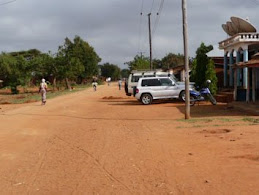

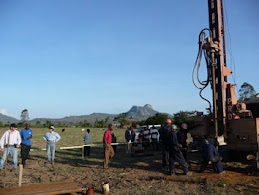



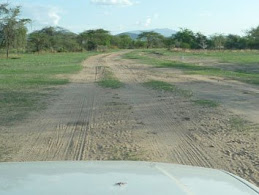























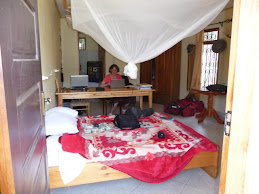

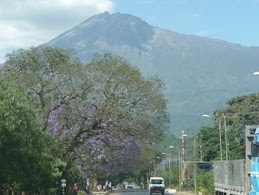
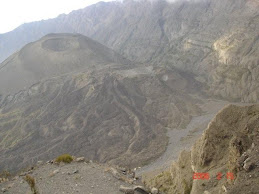
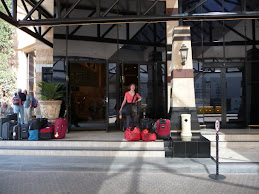


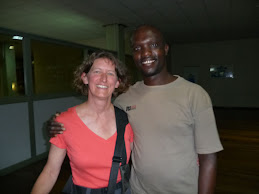
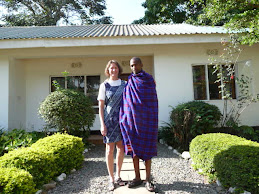
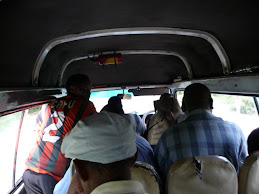








No comments:
Post a Comment